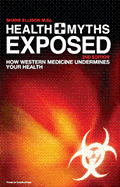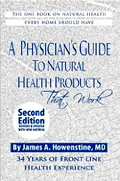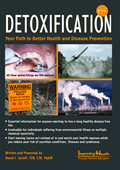NEW MIGRAINE RESEARCH HIGHLIGHTS BRAIN AGING PRINCIPLES RELEVANT TO ALL
By
Byron J. Richards, CCN
September 10, 2013
NewsWithViews.com
Those
experiencing chronic migraine headaches, especially of the aura type,
should be aware of the most recent findings that indicate this type
of recurring stress does take a toll on the healthy structure of the
brain. It is likely that  recurring
headaches of any type are a form of stress that poses a significant
brain-health challenge over the long haul. The findings of this study
are relevant to everyone, as they help solidify our understanding of
how the brain ages – opening the door for solutions that can preserve
better brain health into older age as well as helping to maintain better
brain function in younger years.
recurring
headaches of any type are a form of stress that poses a significant
brain-health challenge over the long haul. The findings of this study
are relevant to everyone, as they help solidify our understanding of
how the brain ages – opening the door for solutions that can preserve
better brain health into older age as well as helping to maintain better
brain function in younger years.
“Traditionally, migraine has been considered a benign disorder without long-term consequences for the brain,” said study author Messoud Ashina, MD, PhD, with the University of Copenhagen in Denmark. “Our review and meta-analysis study suggests that the disorder may permanently alter brain structure in multiple ways.”
The researchers found various types of wear and tear in brain structure that were detectable with MRI. The data showed that recurring migraine headaches increased brain lesions by 68% in those with aura and 34% in those without aura, with widespread evidence of “mini-stroke” damage and overall shrinkage of brain size.
It is a sobering commentary on the skill of Western medicine that their toolbox for this issue is limited to a variety of pain killers – which sometimes treat or manage the pain in a symptomatic way and sometimes don’t work so well. While some type of pain killing is better than the headache, getting stuck in the rut of ongoing painkiller use is also problematic and not addressing the source of the problem. Furthermore, nothing is being done to repair the types of injury reported in this study.
When imaging technology is able to view this type of structural brain pathology there is already significant deviance from normal and healthy function in the brain. The types of changes identified are not uncommon from the wear and tear of aging that piles up as the years go by. Based on the results of this study, it is quite accurate to say that recurring migraine headaches are speeding up the rate of brain aging. For example, we know that similar signs of brain wear and tear are starting in many adults by age 35 and don’t manifest as notable clinical problems until decades later when they finally accumulate to such an extent that brain function is severely impacted.
Placing this into perspective, migraine headaches are simply one form of brain duress. High ongoing stress, depression, PTSD, alcohol abuse, drug abuse, anxiety, lack of sleep, headaches of any kind, pollution/toxin exposure, other reasons for chronic pain, cholesterol medication, anti-depressant medication, anti-psychotic medication, poor diet, pesticides on food, and a lack of refreshing exercise are all examples of factors that can induce similar brain injury over time. Intensity of stressors, duration, and a combination of different types all add up to a potentially faster rate of brain aging.
Headaches from a Clinician’s View
Over the years I have helped thousands of people with fibromyalgia, most of whom struggle with recurring headaches – some of which are migraines. From a practical point of view the different types of headaches that Western medicine classifies have little use in fixing the source of the problem and stopping the headaches from happening in the first place. I like to classify headaches in the following manner, which helps to align solutions that are most likely to be of help.
Lymphatic/Pressure Headaches – These are headaches that start in the back of the neck and work upward or start in the top of the head or behind one or both eyes. They feel like a build up of pressure, which is what they are. Pressure is unable to drain properly from the head because the lymphatic system (a pressure system) is clogged or “constipated,” which typically manifests as symptoms of tightness, stiffness, or pain in the shoulder and neck area (location of the major thoracic ducts of the lymph system).
Part of what the lymph system is doing is removing trash, so such headaches are signifying a clogged internal plumbing problem. Such people often have extra mucous or congestion in the morning or after eating. An arm may go numb or fall asleep while they are sleeping at night. Ears may pop or ring. Such headaches are triggered by doing too much or by high stress, as the trash from the extra activity builds up and aggravates an already stagnant system. Environmental pressure changes can also trigger the headaches (weather fronts, flying in an airplane, full moon/new moon).
Hormonal Headaches – These are headaches that are triggered as the menstrual cycle approaches or after it begins. If this is the only time headaches happen, then it is the simple case of hormone imbalance. However, this type of headache is often in combination with one of the other three, indicating the additional demands of the menstrual cycle are also triggering several kinds of headache.
These are caused by a lack of progesterone relative to an increase in estrogen. The extra estrogen displaces magnesium and retains sodium in the vascular system of the brain, causing the blood flow to the brain to reduce and the headache to start. These headaches often begin above the temples or sides of the head.
Blood/Toxic Headaches – Like hormonal headaches, these often begin around the temples or sides of the head, as they are also triggered by vascular inflammation. This is because the blood flow into the head is being reduced from some form of stress. While this can be excessive adrenaline from high emotional stress, it is more often than not that the dominate factor triggering them when they are recurring is toxicity coming from digestive and/or sinus problems.
The imbalance in foreign bacteria/yeast produce toxic waste products such as LPS (lipopolysaccharide) or acetaldehyde which enters the general circulation and then crosses the blood-brain barrier and triggers headaches. Since your blood is the most tightly regulated fluid in your body, this problem indicates too much toxic trash in your blood that your body cannot process efficiently. This usually means that the liver and/or digestive tract need assistance in the clearance of waste products.
Nerve Inflammation Headaches – Up to this point I have explained three types of headaches that are being caused from outside of the brain itself. It is as if the brain is being “punched in the nose.” Unfortunately once the brain starts having recurring headaches it becomes a problematic lesson in inflammatory chain reactions within the brain itself.
Most people with bad migraines have a combination of the above types of problems along with a brain that is “raw” from dealing with the problems of excessive “nose punching.” In this raw and inflamed state the brain is too hot. The glial cells in the brain, which use the same communication molecules as the immune cells in the lymph system, cross talk with each other and send a lot of 911 panic messages back and forth. The brain learns a bad inflammatory habit which manifests as recurring headaches.
The intensity of the inflammation (severity of headache), especially when recurring, causes heat-induced “cooking” damage to brain structures on a microscopic basis. When such injury is significant enough and is not repaired, then it accumulates to the point that it is viewable on the MRI scans as noted in the above study.
While pain medication may be able to block such inflammation in the short term, it actually gets in the way of healing injured brain tissue, leaving a person between a painful rock and a hard place.
By managing the above three categories and by nourishing the brain, the inflammation can be cooled off over time and the headaches minimized or eliminated. This can take 2-6 months if a problem has been locked in place for a significant period of time, with a notable trend of improvement occurring during that time. Working with a physician, a person can gradually taper their pain medications simply because they are having fewer and less severe headaches. It is even possible to repair injury to brain cells.
Nutrient Solutions to Assist Headaches
Headaches, even migraine headaches, progress from the simple to the more complex. From a nutritional perspective, the simple case resolution of headaches can sometimes be accomplished by supplying the most fundamental nutrients the brain uses. These are B vitamins, calcium, magnesium, and essential fatty acids such as DHA and GLA. Quality matters. Higher magnesium and fatty acids all help reduce brain inflammation. B vitamins and calcium help nerve transmission. In general, the higher the stress a person is under, the higher the level of support that is needed.
Constipation is the next important target when addressing headaches. A person must have at least one good bowel movement per day or headaches are unlikely to improve. This is because constipation keeps toxins moving back into the blood and aggravating the problem. An increase in dietary fiber, using supplemental fiber, higher magnesium, extra vitamin C, and friendly flora probiotics are all basic strategies to keep the bowels moving along. Laxatives are always better than constipation, and can be employed to keep the bowels moving while non-laxative solutions are established.
Basic nutrition for menstrual headaches involves the steps in both preceding paragraphs, which is often enough to correct them. In many cases nutrient intake needs to be boosted from day 14 to day 28 of the cycle pattern. This is because the body is placing a steak dinner worth of protein on the wall of the uterus every day. In addition to extra B vitamins, minerals, and fatty acids a person may need to ensure a decent protein portion at every meal. Adrenal support nutrients such as pantethine or Q10 can be used in higher amounts during this time to help energy production and stress tolerance.
Some women may benefit from higher levels of other types of brain support nutrition, especially if they have symptoms of PMS other than the headaches. For stubborn headaches, progesterone cream used from day 14 until the menstrual cycle begins can be of help. The typical dose is ¼ tsp from day 14 – 21, then ½ tsp from day 21 until the period starts. The dose can be extended into the menstrual cycle for a few days if needed to help with headache prevention.
The “minimum daily requirement” for menstrual support nutrition is whatever it takes to offset the energy-intense demand of this natural process. Always start with basics first, as that may be all you need. Build from there. And keep in mind that you may need less nutrient support the first two weeks and higher support during the second two weeks. If a person is having a more stressful or demanding month than higher support is suggested all month long.
The best basic nutrition for lymphatic/pressure headaches is arabinogalactan, which can be taken before bed and first thing in the morning. Sometimes four doses per day is helpful. Use high enough amounts to notice there is less pressure and less upper back area stiffness.
The lymph system responds to body movement, thus being more active helps. Individuals with headache issues must be careful when increasing exercise as to not trigger headaches. This issue will improve as general plumbing improves, but trying to have less stagnation and more activity will help improve the lymph system.
A variety of nutrients can help with more advanced lymph stagnation. This is especially important if sinus congestion is part of the problem, as sinus “trash” is a form of ongoing stress to the lymph system and head drainage of pressure. In this case I like oregano oil and quercetin, using enough to help clear the sinuses.
Other excellent lymph nutrients are bromelain (which helps eat trash), d-limonene oil (which helps dissolve lymph sludge), and alkylglycerols (which help wake up immune macrophages.)
Once again, start with basics and build from there. The “minimum daily requirement” is whatever it takes to get the lymph flowing better, which is easily noticeable because the pressure issues are improving. Improved physical fitness is the long-term remedy for better lymph flow.
The best nutrients for clearing blood toxicity are liver support nutrients that help your liver process waste products more efficiently. The two best are milk thistle extract (silymarin) and R-alpha lipoic acid. Many other nutrients can be helpful, including greens like chlorella (binds up toxins), pantethine (clears brain fog and acetaldehyde), and MSM sulfur. Extra supplemental fiber acts like a sponge for toxins your liver is clearing through your digestive tract and can make a big difference in addition to helping bowel movements.
Individuals with intense recurring headaches often have all of these issues. It is as if their trash can is filled up to the top and any little bit of extra trash causes a headache. As they improve they will first lower the trashcan by about 6 inches, which means that they can now do a little bit more before a headache is likely to happen. As they further improve, they can do more and more and have a headache only occasionally – especially at times when they push it too much. And after a period of time of working to improve their overall plumbing systems while gradually improving their physical fitness, then headaches can be an issue of the past.
Nutrient Objectives for Brain Repair
The study cited at the beginning of this article elevates the headache health issue to a whole new level of importance. I believe it is of general importance to all, as many other types of stress induce microscopic brain structural damage that progressively accumulate over the decades and eventually cause major problems. And like excessively wrinkled skin, a person should have done something about it a whole lot sooner.
| Subscribe to the NewsWithViews Daily News Alerts! |
The quote of the researcher at the beginning of this article said the damage was permanent. That is only true if you don’t do something to improve. Reducing and eliminating intense stressors of any type, such as headaches, is a necessity. Ensuring adequate sleep and consistent refreshing exercise are potent ways to help your brain rejuvenate. Eating high-quality food is a must. Better problem solving and stress management skills always help. And brain rejuvenation nutrition is a major tool in your toolbox.
We now know that brain inflammation can be reduced, brain cells can be repaired, and new brain cells can form – even with new connections that represent a potential increase in human ability. This month I will be writing articles that help explain how nutrition, as part of a healthy lifestyle pattern, can help repair and rejuvenate your brain. This is not just an issue of correcting problems such as the wear and tear caused by headaches; it is an issue of human ability and potential.
� 2013 Wellness Resources, Inc. - All Rights Reserved
















 Share
This Article
Share
This Article








